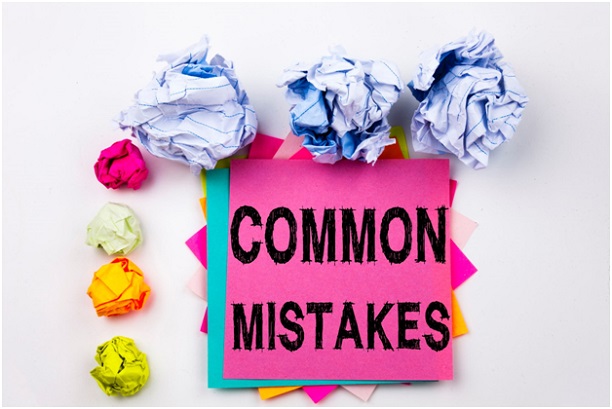A contract review procedure is a documented system of processes, activities, and checks that a business goes through when drawing up contracts. It defines the roles and responsibilities of all parties involved, how documents are reviewed, and the level of oversight and approval needed.
Contents

This procedure provides a formalized process for effectively examining contracts using suitable resources. It helps ensure that contracts are complete, accurate, and compatible with other contracts.
The purpose of a contract review procedure is to reduce the risk associated with contractual relationships and to control agreements with third parties such as customers, suppliers, or partners. Besides, it aims to ensure the business can meet customers' quality requirements, making it a critical tool in quality management.
Because these documents are essential for business operations, a formalized review process helps ensure that contracts will be valid when put into practice. They can also help your business detect and prevent legal disputes, reduce the time needed to prepare contracts, and increase contract management efficiency.
Our Contract Review Procedure is proven to work.

Generally, the contract review process involves five crucial activities, namely:
Let's examine these in detail:
This involves gaining and clarifying customer requirements through dialogues and negotiations. As part of this process:
This is because a contract review procedure should be coordinated with other business activities such as negotiation, order entry, or design work. And it cannot cover every aspect of a contract agreement without enough details provided by the customer.
Contract requirements should be determined and reviewed before the contract is finalized to consider changes during negotiation phases. To determine customer requirements, it's necessary to:
Tip: It’s best to obtain customer approval on draft and final versions to have a complete understanding of what's required by the customer.
After determining customer requirements, a business needs to find ways to produce products or services that meet those requirements. To do this, an organization needs to use a system for handling work orders.
Work order management is a process that allows processes to work together and coordinate their activities, making sure orders are executed promptly following customer requirements.
Businesses should have a process in place to document and resolve differences between customer requirements and what the organization can deliver.
As a result, organizations often use 'amendment documents' issued by customers through their representatives after review to make changes to contracts. The amendment document describes the modification in detail. Businesses should make sure that the amendment document is issued:
Businesses need to follow this procedure to amend deficient contracts so they can prevent disputes later.
One common form of shortcomings in contracts results from requirements that change during the time it takes to prepare the contract, such as product specifications or payment terms. Handling these changes, therefore, is an essential part of the contract review process.
When it comes to risk management, organizations should consider factors such as:
Businesses need to evaluate their contract review process based on the results of this risk assessment, then identify ways they can help to prevent problems that may lead to disputes.
A business can use its risk assessment results when making a risk management plan. They also need to decide how they're going to manage risks related to contracts as part of the plan, including what approaches to take and whom to rely on for information about potential cash flow problems or other potential challenges.
This video describes contract review strategies and best practices in detail:
https://www.youtube.com/watch?v=ho2hV1RDiYg
Our Contract Review Procedure is proven to work.
The benefits of a contract review procedure include:
Generally, a review procedure is not just limited to contracts. Instead, it can also be used to increase quality in internal processes.

When writing contracts, organizations should keep in mind that the most common mistakes that can lead to disputes after an agreement is signed include:
To avoid these problems, businesses should:
Contracts are a fundamental part of any business. They ensure that all parties involved in an agreement know what their obligations are and how they will be held accountable for meeting them. There is also clarity provided on the consequences if one party fails to meet its responsibilities.
The benefits of implementing contract review procedures can include better risk management, more effective third-party agreements, improved operational efficiency, and reduced legal costs.
Therefore, it's worth implementing a process to ensure that your contracts are up-to-date and adhere to quality and legal standards.
Our Contract Review Procedure is proven to work.
Author: Richard Keen
Updated: 16th September 2021

Richard is our Compliance Director, responsible for content & product development.
But most importantly he is ISO's biggest fanboy and a true evangelist of the standards.
Learn more about Richard

Don’t Try to Manage It All Alone!
Our ISO Auditors and Quality Manager Trainers have been in this industry for years, and since 2002 we’ve been providing thousands of small businesses and large corporations with the tools they need to get certified.
Instead of trying to create everything you need to follow this process from scratch, use ours. We have procedures, templates, checklists, process maps, forms and gap analysis tools to help you control your documented information without missing a single input or output.
Before you invest all the hours reinventing the wheel, before you spend countless dollars outsourcing the task — try our templates.
| QMS ISO 9001 |
EMS ISO 14001 |
OH&S ISO 45001 |
|
|
Contract Review Procedure The purpose of this procedure is to ensure that all tender and contract requirements together with additional requirements that are not specified but are necessary for fitness for use as per applicable legislation, regulations and requirements for availability, delivery and support are adequately defined and that the company is capable of meeting the requirements of its clients. Forms & Reports also included:
>> Free Download - Control of Calibrated Equipment Procedure - this will give you a good idea of what to expect when you purchase the procedure. |
$19 USD |
|
|
Pay by Credit Card, Debit Card, PayPal or Apple Pay.


|
Please read our Money Back Guarantee. |
Bought by Small Businesses and Large Corporations our templates have been sold online and CD since 2002.
Used by:
The Templates are used by first-timers following our step-by-step, clause-by-clause guidance documents; and experienced Quality Managers wishing to streamline and improve their existing documentation.
The application of our templates and quality manuals is scalable and generic; regardless of the size and type of organization. The elements that form the quality management system are the same.
1. Our customizable templates save you time and money by offering a streamlined process to create your quality documentation
2. They’ve got everything you need in one simple template
3. Proven to work our templates have helped thousands of businesses big and small achieve certification
4. Documents use styles to make reformatting and rebranding a breeze
5. Our templates are generalizable for any industry or sector. The application of our templates is scalable and generic; regardless of the size and type of organization.